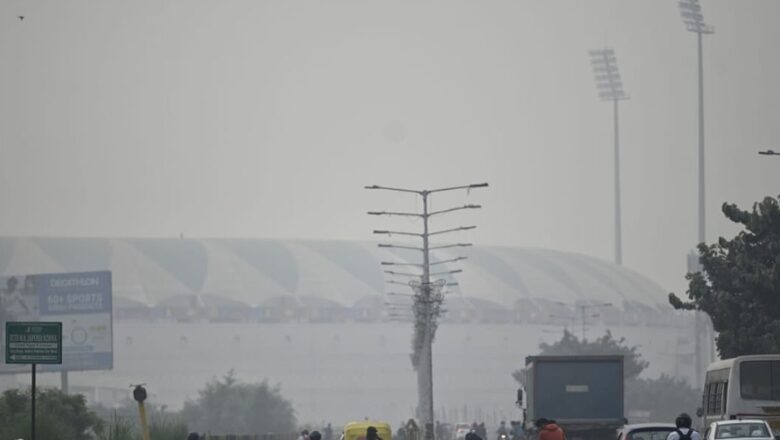
views
Not only Delhi-NCR, Uttar Pradesh too is gasping for fresh air. With the highest index value of 494, UP’s Greater Noida was one of the most polluted cities on Friday, whereas Ghaziabad and Noida, where the Air Quality Index (AQI) was recorded as 410 and 440 respectively, remained in ‘Severe’ category.
Besides, UP’s Baghpat, Bulandshahr, Hapur, Meerut, and Khurja continue to be in ‘Very Poor’ category due to pollutants in the air and Muzaffarnagar and Gorakhpur were in the ‘Poor’ category.
The UP government, while highlighting that the state has witnessed a sharp dip in cases of stubble burning, has blamed the practice in neighbouring states of Punjab and Haryana for the deteriorating air quality in Delhi and UP. Scientists and experts, meanwhile, called high air pollution levels a fallout of approaching winters.
Lucknow Hit Too
The state’s capital too has been affected by the alarmingly high air pollution levels in UP. On Wednesday, Lucknow’s AQI plunged to ‘Poor’ category. This was perhaps the second time in the last six months when the air quality index for the city dipped to ‘Poor’.
Adityanath Pins Blame
Blaming Punjab and Haryana for the deteriorating air quality, Uttar Pradesh Chief Minister Yogi Adityanath said in a statement: “On my way to Delhi, I landed in Ghaziabad. As soon as I stepped out of the aircraft, my eyes started burning, I realised it was due to smog. When I checked NASA satellite images to see the areas affected by stubble burning, I noticed that the entire area of Punjab and Haryana was highlighted with ‘red’. And when air from these states travels, it envelopes entire Delhi and parts of UP.”
The statement came a few days after the Supreme Court, concerned over the alarmingly high air pollution levels in Delhi, issued notices to the governments of Delhi, UP, Punjab, Haryana and Rajasthan to submit an affidavit within a week, detailing the steps they have taken to curb the annual menace.
Stubble Burning Dips in UP
UP’s agriculture department said a sharp dip has been seen in incidents of stubble burning — 906 cases up to October in 2023. “It is far less when it comes to the stubble burning incident figures in previous years. In 2017, UP witnessed more than 8,500 cases of stubble burning,” said CP Srivastava, deputy director, Agriculture, UP.
According to the available data, a total of 3,017 cases of stubble burning were reported in 2022. However, due to stringent measures and awareness campaigns, only 906 cases have been reported in the first 10 months of 2023. Previously, as many as 8,784 cases of stubble burning were reported in 2017, 6,623 in 2018, 4,230 in 2019, 4,659 in 2020, and 4,242 in 2021.
Srivastava credited strict crop residual management and awareness drives among the farmers as the main cause behind the sharp dip in the cases.
Dip in NCR Too
In Shamli, until October 30, 2022, six such incidents were reported. However, in 2023, only five incidents were reported. Similarly, in Meerut, there were three incidents in 2022 and four in 2023. In Bulandshahr, there were six incidents reported in 2022 and seven in 2023, and in Baghpat, there were two incidents in 2022 and one in 2023. Hapur had two cases last year, but due to increased awareness this year, no such incidents have occurred thus far.
Vehicular population also a cause
Experts at CSIR- Indian Institute of Toxicology Research (IITR), Lucknow, cited vehicular combustion as one of the main reasons behind the high pollution levels while some experts blamed the approaching winters.
“In UP, Lucknow alone has witnessed 6.3 per cent rise in the number of registered vehicles between the years 2022 and 2023. The total number of vehicles, reported on June 1, 2023, was 2,816,291 whereas the number of vehicles registered between 2021 and 2022 was 2,650,286,” stated IITR’s environmental monitoring division’s pre-monsoon report of 2023.
UC Shukla, regional officer of the UP Pollution Control Board in Lucknow, added: “Winter conditions lead to lower atmospheric pressure, which traps suspended particulate matter such as PM2.5 and PM10 in the lower layers of the atmosphere.”
Regular inspection, water sprinkling, permit to only BS V compliant vehicles can minimise pollution
Experts and senior scientists at IITR concluded that only collective efforts can bring about any change. “It is suggested that only BS-V compliant vehicles are allowed to ply on the streets due to their lower emissions, and the government should promote the adoption of electric vehicles. RTO should carry out thorough vehicle inspections, whereas municipal corporations should ensure regular sprinkling of water and wet sweeping on the roads in order to boost air quality,” an expert with IIT said.




















Comments
0 comment